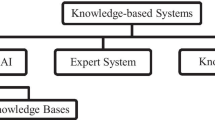Abstract
This paper aimed at developing a nondestructive and rapid method to detect adulterations in Chinese glutinous rice flour (GRF) using near-infrared (NIR) spectroscopy and chemometrics. Because various known and unknown ingredients can be potentially used for food adulteration, the commonly used targeted analytical methods focused on detecting one or more known/suspected adulterants usually cannot catch up with the constant “updating” of new adulterants. Therefore, this paper attempted to achieve untargeted detection by modeling the NIR spectra of pure GRF and analyzing those of test samples. Soft independent modeling of class analogy (SIMCA) and a recently suggested one-class partial least squares (OCPLS) was used to develop class models of pure GRF. To highlight the slight variations in NIR spectra caused by low-level doping and enhance the specificity for detecting extraneous adulterants, unwanted variations in pure GRF spectra should be removed. Smoothing, taking second-order derivative (D2), standard normal variate (SNV), and D2-SNV were performed to improve the raw spectra. One hundred thirty pure GRF samples from six main producing areas were prepared and used for training class models. To validate the specificity of class models, 215 adulterated GRF samples were prepared by blending the pure objects with different levels (1, 2, 4, 8, and 10 % (w/w)) of wheat flour, non-GRF, and an illegal food additive, talcum powder, which have been frequently used for GRF adulteration. The best OCPLS model was obtained with D2 spectra with prediction sensitivity of 1.000 and specificity of 0.916; SIMCA with D2-SNV obtained prediction sensitivity of 1.000 and specificity of 0.902. It was demonstrated that adulterations of GRF with 2 % or higher levels of wheat flour, non-GRF, and talcum powder can be safely detected with D2, SNV, or D2-SNV spectra. The analysis results indicate the specificity of untargeted detection of the three adulterants in GRF can be improved by removing the unwanted within-class variations.





Similar content being viewed by others
References
Barnes RJ, Dhanoa MS, Lister SJ (1989) Appl Spectrosc 43:772–777
Brereton RG (2011) J Chemom 25:225–246
Cámara-Martos F, Zurera-Cosano G, Moreno-Rojas R, García-Gimeno R, Pérez-Rodríguez F (2012) Food Anal Methods 5:19–28
Chan ZCY, Lai WF (2009) Trends Food Sci Tech 20:366–373
Chan EYY, Griffiths SM, Chan CW (2008) Lancet 372:1444–1445
de Jong S (1993) Chemom Intell Lab Syst 18:251–263
Donoho DL (1982) Breakdown properties of multivariate location estimators. Qualifying Paper, Harvard University
Forina M, Oliveri P, Lanteri S, Casale M (2008) Chemom Intell Lab Syst 93:132–148
González-Caballero V, Sánchez MT, Fernández-Novales J, López MI, Pérez-Marín D (2012) Food Anal Methods 5:1377–1385
Gupta VK, Das A, Dey A (1991) Stat Probabil Lett 11:177–180
Hubert M, Rousseeuw PJ, Verboven S (2002) Chemom Intell Lab Syst 60:101–111
Hubert M, Rousseeuw P, Verdonck T (2009) Comput Stat Data An 53:2264–2274
Juliano BO (1971) Cereal Sci Today 16:334–340
Karoui R, Downey G, Blecker C (2010) Chem Rev 110:6144–6168
Kennard RW, Stone L (1969) Technometrics 11:137–148
Kourti T, MacGregor JF (1996) J Qual Technol 28:409–428
Lachenmeier DW, Humpfer E, Fang F, Schütz B, Dvortsak P, Sproll C, Spraul M (2009) J Agric Food Chem 57:7194–7199
Madigan T, Kiermeier A, de Barros Lopes M, Cozzolino D (2012) Food Anal Methods 5:995–1002
Moore JC, Ganguly A, Smeller J, Botros L, Mossoba M, Bergana MM (2012) NIR news 23:9–11
Prado N, Fernández-Ibáñez V, González P, Soldado A (2011) Food Anal Methods 4:582–589
Roder W, Keoboulapha B, Vannalath K, Phouaravanh B (1996) Econ Bot 50:401–408
Savitzky A, Golay MJE (1964) Anal Chem 36:1627–1639
Stahel WA (1981) Robuste schätzungen: infinitesimale optimalität und schätzungen von kovarianzmatrizen, Ph.D. thesis, Swiss Federal Institute of Technology, Zurich, Switzerland
Sun ZD, Xu LN, Chen G, Chen HY (2010) Food Sci Technol 35:98–103
Tzouros NE, Arvanitoyannis IS (2001) Crit Rev Food Sci 41:287–319
Varavinit S, Shobsngob S, Varanyanond W, Chinachoti P, Naivikul O (2003) Starch-Starke 55:410–415
Verboven S, Hubert M (2005) Chemom Intell Lab Syst 75:127–136
Wanchana S, Toojinda T, Tragoonrung S, Vanavichit A (2003) Plant Sci 165:1193–1199
Wang JY, Wang YN, Wang ZW (2009) J Jilin Agr Sci 34:59–64
Wani AA, Singh P, Shah MA, Schweiggert-Weisz U, Gul K, Wani IA (2012) Compr Rev Food Sci F 11:417–436
Wold S (1976) Pattern Recognit 8:127–139
Xu QS, Liang YZ (2001) Chemom Intell Lab Syst 56:1–11
Xu L, Fu HY, Jiang N, Yu XP (2010) Chinese Anal Chem 38:175–180
Xu L, Cai CB, Deng DH (2011) J Chemometr 25:568–574
Acknowledgments
The authors appreciate the financial support from the National Public Welfare Industry Projects of China (No. 201210010, 201210092, and 2012104019), the National Natural Science Foundation of China (No. 31000357), Hangzhou Programs for Agricultural Science and Technology Development (No. 20101032B28), and the Key Scientific and Technological Innovation Team Program of Zhejiang Province (2010R50028).
Author information
Authors and Affiliations
Corresponding author
Additional information
L. Xu and S.-M. Yan equally contributed to this study.
Rights and permissions
About this article
Cite this article
Xu, L., Yan, SM., Cai, CB. et al. Untargeted Detection of Illegal Adulterations in Chinese Glutinous Rice Flour (GRF) by NIR Spectroscopy and Chemometrics: Specificity of Detection Improved by Reducing Unnecessary Variations. Food Anal. Methods 6, 1568–1575 (2013). https://doi.org/10.1007/s12161-013-9575-y
Received:
Accepted:
Published:
Issue Date:
DOI: https://doi.org/10.1007/s12161-013-9575-y




